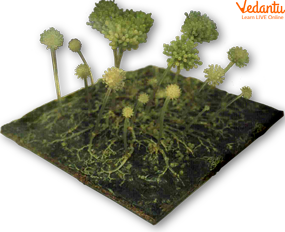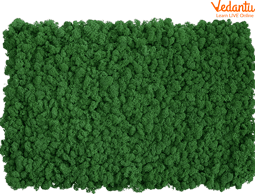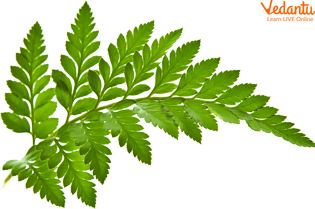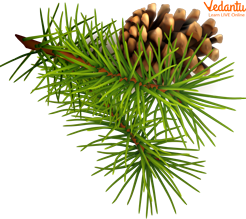




What Are Non-Flowering Plants? Definition and Standout Examples
Have you ever seen Non-Flowering Plants? If yes, you may have observe a structure like this:

Non-Flowering Plant
The plants which do not produce flowers are known as non-flowering plants. Various examples of non-flowering plants such as hornworts, liverworts, and Pinus fall under this category. These plants usually reproduce with or through spores. Here we will discuss the definition of non-flowering plants, how non-flowering plants reproduce, and the different types of non-flowering plants that are there in the world.
What is a Non-Flowering Plant?
Plants that do not produce flowers are classified as non-flowering plants. Bryophytes, pteridophytes, and gymnosperms are some examples. Gymnosperms generate seeds, however, they are not contained within the ovary. The ovule and pollen grains develop within the sporangia found on microsporophylls and megasporophylls, which spirally organise to create male and female strobili or cones. Flowering plants, angiosperms, have male and female reproductive systems in their flowers.
Types of Non-Flowering Plants
There are assorted types of categories which come under the types and are explained as follows:
1. Spores Producing Non-Flowering Plants
Such types of non-flowering plants reproduce by releasing large numbers of tiny spores.
Seeds are not produced by them and they use spores. Furthermore, Spores are tiny organisms that contain single cells. Also, Spores are too tiny and light that they can be dispersed by wind to assorted locations, and further where they reach they Grow there themselves.

Spores
Mosses
These are soft and spongy. This type of Non-flowering plant can only grow a few inches tall. And they prefer to Grow in Clumps or we can say they grow in Cushions. Mosses don't have flowers or seeds, But they utilise the Spores to Reproduce. Apart From this Mosses plants attach themselves to rocks in the soil with Short Growths known as Rhizoids.

Mosses
Ferns
Another type of Non-flowering plant is Known as Ferns. They also produce spores and look Like brown colour spots and are also dust like in nature. Ferns are found underneath the leaves. When mature the Spores explode and substances are released that further come in contact with soil and reproduction initiates.

Ferns
2. Seeds Producing Non-Flowering Plants
The seeds are released by the cones and are Winged in nature. They Float on the wind. They float until they reach the ground, where they Germinate and Grow further. They are called Gymnosperms.
Gymnosperms
Gymnosperms are also called Naked seeds because their seeds are open to the air without any Covering and are kind of naked which makes the name so. They have no flowers or Fruits. One of the major Groups of this category is Conifers.
Conifers
Conifers mean bearing Cones. They use cones to store seeds. These are woody Plants and include trees such as Pine Trees, firs, cedars, and Redwoods.
Cones
This type reproduces using cones and is also known as Conifers. They can be Male cones or female cones. The ones which are male cones release pollen and if pollen lands on a female cone, It produces Seeds. Pollen is carried away by the wind.

Cones
Do All Plants Have Seeds?
We can say that not all plants do not bear seeds. There are numerous ways in which plants Reproduce. But here as we are talking about Non-flowering plants, so we can say that all plants do not have seeds. Liverworts and hornworts are also without seeds. Numerous plants do not possess Seeds. Plants such as Ferns, and Mosses which are Non-flowering In nature produce spores instead of seeds. Also, mushrooms are produced by spores.
How do Non-Flowering Plants Reproduce?
We can say that non-flowering plants reproduce by spore formation. In this process, large numbers of tiny spores are released. Spores are produced in a structure called sporangia. Sporangia is a structure within which spores are produced. These can be single cells or can be multicellular. Unlike seeds, spores are usually single reproductive cells in nature.
Interesting Facts about Non-Flowering Plants
There are over 12,000 Assorted species of Mosses.
Most Trees are non-flowering plants. The leaves of the trees are very vital.
The Largest non Flowering plant is Redwoods.
Pines are Non-flowering evergreen plants. They remain Green throughout all seasons hence called evergreen.
Leaves of ferns are called Fronds. Ferns are some of the oldest plants found Millions of years ago
Summary
Non Flowering plants mainly fall into one of the above-mentioned groups such as Ferns, liverworts, mosses, cones, and Gymnosperm. Gymnosperms are a good source of food. Also, they are a good source of starch. Various species of Non-flowering plants are also used in the Production of Wine Some algae also fall under non-flowering Plants.
FAQs on Non-Flowering Plants: Types, Features & Importance
1. What is the name for Non-flowering Plants that use seeds to reproduce?
Gymnosperms are the plants that use seeds to reproduce, which have no covering and are hence called Naked seeds. Gymnosperms are groups of plants that produce seeds that are not contained within an ovary or fruit. These include conifers, and cycads and are found in temperate forests. The seeds of gymnosperms are open to the air and are directly fertilised by pollination as they do not produce flowers, and do not produce fruits. Gymnosperms have needle-like leaves. These plants have vascular tissues which help in the transportation of water and nutrients.
2. What is the definition of non-flowering plants?
Non-flowering plants are those that do not ever produce flowers. For example mosses, liverworts, hornworts, etc.
3. Write some characteristics of flowering plants.
Characteristics of flowering plants are:
Flowering plants grow flowers and use seeds to reproduce.
Flowering plants are highly evolved with true roots, leaves, and stems.
Flowering plants are commonly known as angiosperms
4. Write some characteristics of non-flowering plants.
Characteristics of non-flowering plants are:
Non Flowering plants do not grow flowers, they use either seeds or spores that are very tiny.
Non-flowering plants do not have or lack true roots, leaves, and stems.
Non-flowering plants include cryptogams and gymnosperms.









